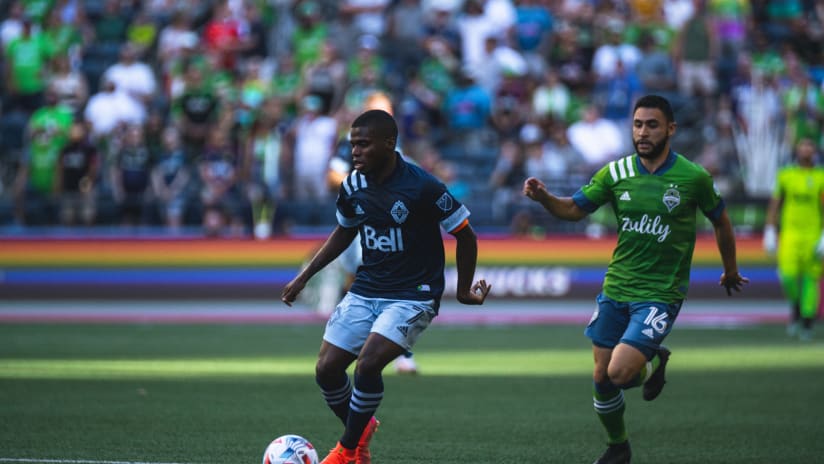Sometimes, there’s more to the beautiful game than meets the eye. Delve deeper with Analysts’ Corner, presented by EC Managed IT, a new blog featuring tactical insights from Whitecaps FC video analyst coach Andrew Peat, assistant video analyst Luke Summers, and Academy and assistant first team video analyst Andrew Foster.
This week’s article will focus on the attacking role of the fullback and how this position/player can impact the offensive element of the game.
The role of every player has offensive and defensive responsibilities for their position, within the team tactics, strategy and coaching philosophy. Describing actions and positional play of an attacking fullback provides insight into what to look for in the profile of a player.
These actions include but are not limited to:
- Overlapping runs
- Underlapping runs
- Taking wide positions and linking from areas inside to attack the box
- Getting into crossing positions that can provide quality service to other attackers
- Not only assisting, but also adding to the team’s goal count
Before diving into each of these situations, it’s important to recognize that when a fullback joins in the attack, balance and cover must be provided to them in the tactical approach for their specific team. Otherwise, if possession is lost, the attacking team can be vulnerable to counter attacks and the attacking fullback will have a long recovery run to make.
This clip shows Leicester City being compact defensively while defending a throw-in and how Liverpool are able to break the pressure on the ball side and then switch play through midfield to exploit the space on the opposite side.
Before Sadio Mane receives the ball, right back Trent Alexander-Arnold recognizes that that Mane is in time and space and this acts as trigger for him to aggressively join the attack by releasing from a deep area. This creates an overload on Leicester City’s left back and forces them to defend the space inside, allowing for Alexander-Arnold to utilize the space in the wide areas with an overlapping run and in this case leading to an exceptional finish.
In this clip, FC Bayern Munich left back and Whitecaps FC product Alphonso Davies shows how he links play down the line with a forward pass then proceeds to join the attack by running forward but inside in a central position. This creates 1-2 combination play that allows Davies to accelerate, get forward, and progress the ball into the final third. In this example, Bayern have three players attacking the box and Davies has time and space to execute a low cross between the back line and the goalkeeper.
The relationship between Davies and his winger is key here. The triggers are knowing when to release relative to pressure on the ball and which space to utilize relative to the positioning of not only his own teammates but also the opposition players. Davies’ movement is purposeful and provides a clear passing option for the player on the ball.
In this clip, Bayern have possession in Hoffenheim’s half and Davies is providing the width on the left. The telestration shows how Davies links inside and continues with a forward run to exploit the space behind, which creates depth. The support alongside is an important detail to allow the quick 1-2 combination. Through this movement, exploiting space, and link play, Davies can get into a crossing position behind Hoffenheim’s back line.
In these two examples, you see how Whitecaps FC fullbacks Jake Nerwinski and Ali Adnan create scoring opportunities through different scenarios, positioning, and execution of actions. Both fullbacks have an attacking role for the team, which can help in not only advancing attacks but also by putting themselves into positions to score goals themselves.
So there’s a little glimpse into the important role of an attacking fullback and the many different ways they are able to impact the game offensively.




